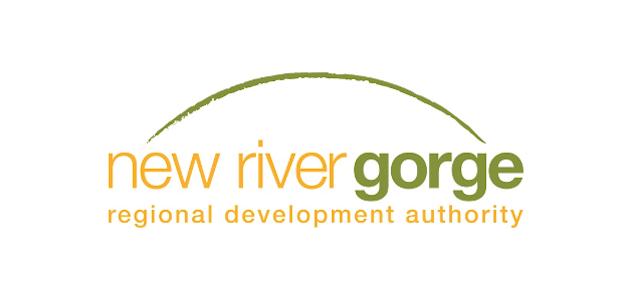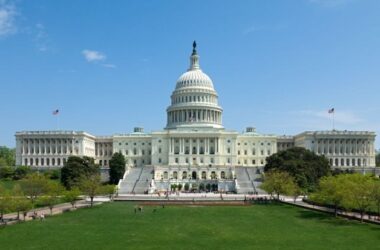By Autumn Shelton, WV Press Association
BECKLEY, W. Va. – Although West Virginia’s economy has almost completely recovered from what has been called the “pandemic recession,” its continued short-term growth is still a bit uncertain due to national concerns about inflation as well as geopolitical and localized issues.
According to Dr. John Deskins, director of the West Virginia University Bureau of Business and Economic Research, who spoke during the New River Gorge Regional Economic Outlook Summit on Thursday, this uncertainty has caused the state’s forecasted growth over the next five years to be “moderately positive.”
Between March and April of 2020, during the height of the pandemic, the state lost 95,000 jobs, Deskins said, adding the good news is that 93,000 of those jobs have returned as of late summer 2022.
Additionally, the unemployment rate now only hovers around four percent, down from a 16 percent surge in April 2020. Over the next year, that rate is expected to reach about five percent.
“We should be celebrating that we have made it through that recession and are back to where we were in the beginning of 2020,” Deskins said. “But, unfortunately, we have had all this turmoil and uncertainty emerge now, nationally, that gives rise to the potential to create a new national recession, which would certainly have implications for West Virginia as well. So, we can’t really have the celebration that we want to have because of this high level of uncertainty.”
He noted that he is not expecting a recession in West Virginia, but that any growth is forecasted to lag behind the nation for a number of reasons, including the state’s low labor participation rate.
Deskins explained that unemployment numbers only show data from those who are actively seeking full-time employment. Instead, he said the labor force participation rate is a more informative statistic, especially since there are “help wanted” signs throughout the state and seemingly no employees to fill those positions.
In 2021, West Virginia had the lowest labor force participation rate in the nation at 55 percent, Deskins said. The national average is 62 percent.
“Only 55 percent of the adults in West Virginia want to work,” Deskins noted. “This is an incredibly important statistic because we are never going to achieve the prosperity we hope for – we are never going to have a per capita personal income figure that’s equal to the national average if we are dead last among the states in terms of labor force participation.”
West Virginia’s per capita personal income in 2021 reached $48,500 in large part because of federal pandemic relief payments in 2020 and wage increases, according to the economic outlook report provided by Deskins. “Per capita personal income in West Virginia stands at 76 percent or so of the national average,” and, now that many of those benefits have been discontinued, per capita personal income is expected to decrease by three percent.
“This has to be one of our top economic development priorities,” he said of the labor force participation rate, adding that health concerns, the drug epidemic and increased educational attainment are all long-term issues the state should work on with its residents to increase the workforce participation rate.
In terms of real gross domestic product (GDP) growth, West Virginia experienced a four percent growth in 2021, but continues to fall behind other states, Deskins said. The state has also experienced an “uneven pace of real output growth over the past decade or so when compared to the national average.”
“West Virginia has underperformed in the nation for the past 10 years,” Deskins continued. “This is a pretty clear sign that we have to address the challenges that we have before us.”
Between 2010 and 2019, the state had a 0.5 percent average annual gain in real GDP, versus 2.2 percent nationally.
It was noted that the state should expand and diversify its export portfolio to decrease volatility from the energy sector, which “bolster’s the state’s economy” during periods of high demand and high production, but is “highly cyclical.”
Coal production was 158 million tons in 2008, but fell to 95 million tons just before the pandemic, Deskins said, noting that although there has been an increase in coal production since the pandemic, mostly due to factors like the Russian invasion of Ukraine and demand from developing countries, there will most likely continue to be a “gradual erosion in coal production.”
On the other hand, the state’s natural gas industry is expected to moderately improve, Deskins added.
“West Virginia is the nation’s fifth leading producer of gas and third-highest producer of natural gas liquids,” the report states. “High wellhead prices for natural gas should lead to strong seasonal increases in production during the winter heating season and supply constraints in Europe and Asia bode well for liquefied natural gas demand.”
The report also states that the construction sector is projected to be hurt by the national housing market slowdown, but infrastructure investments and development projects, such as the $2.7 million investment by Nucor, have increased the overall outlook of this sector.
Data shows that overall employment growth is expected to increase at a rate of 0.3 percent annually for the next five years. During the same period, national growth is expected to average 0.4 percent annually.
“We have so much to do to improve our workforce preparedness to make West Virginia more attractive to potential businesses to get the workforce participation rate up, to make our state more attractive to bring in more workers,” Deskins said. “My hope is that 10 years from now, when I come to give these talks, I can talk about some other simpler problems . . . we have good things going on across our state, but the good things just aren’t as widely dispersed as we would hope.”
“In West Virginia we have beautiful, beautiful natural amenities,” Deskins concluded. “In our state we can’t just pick something random to drive our development. We have to drive our development based on our strengths and our natural amenities are our strengths.”





